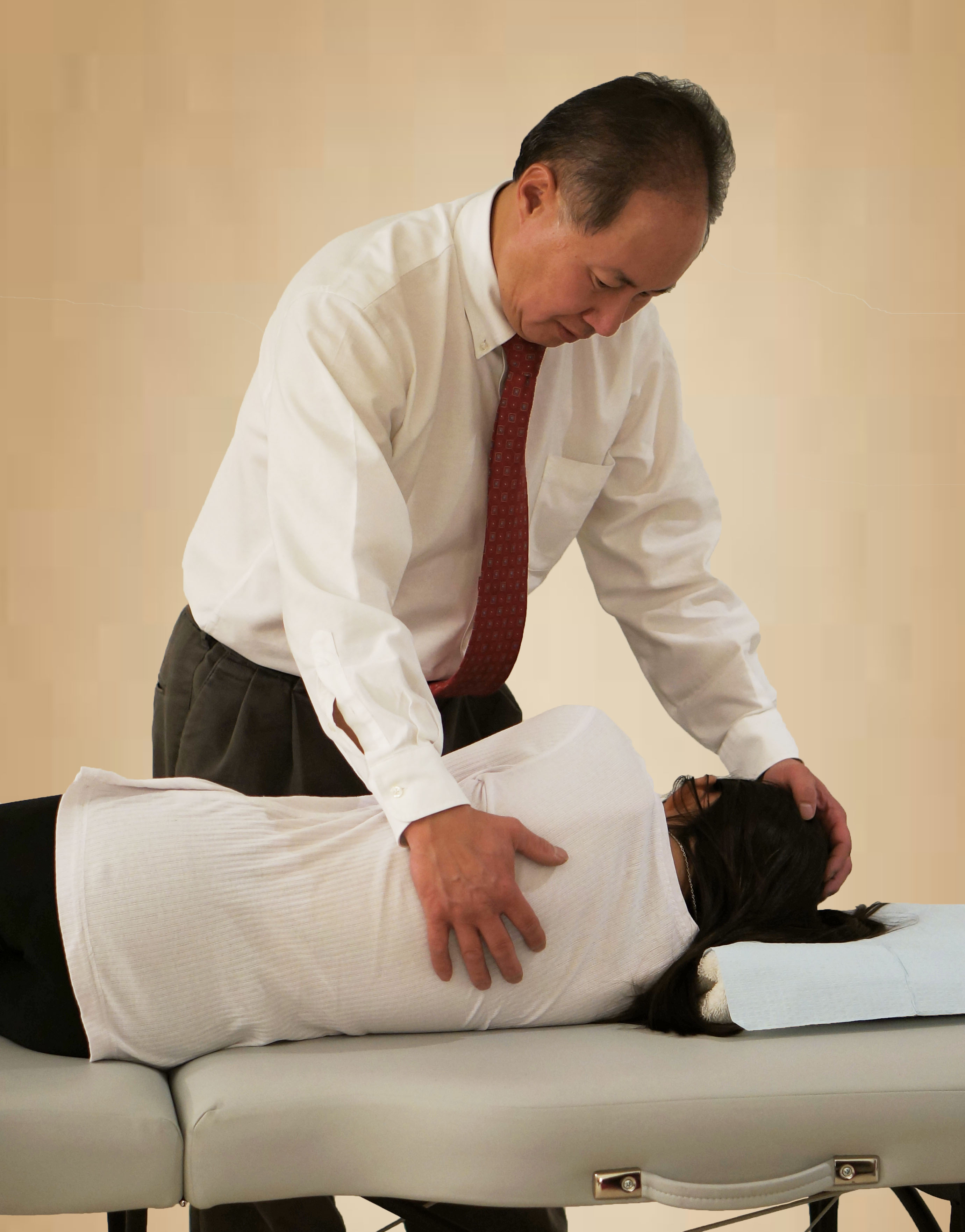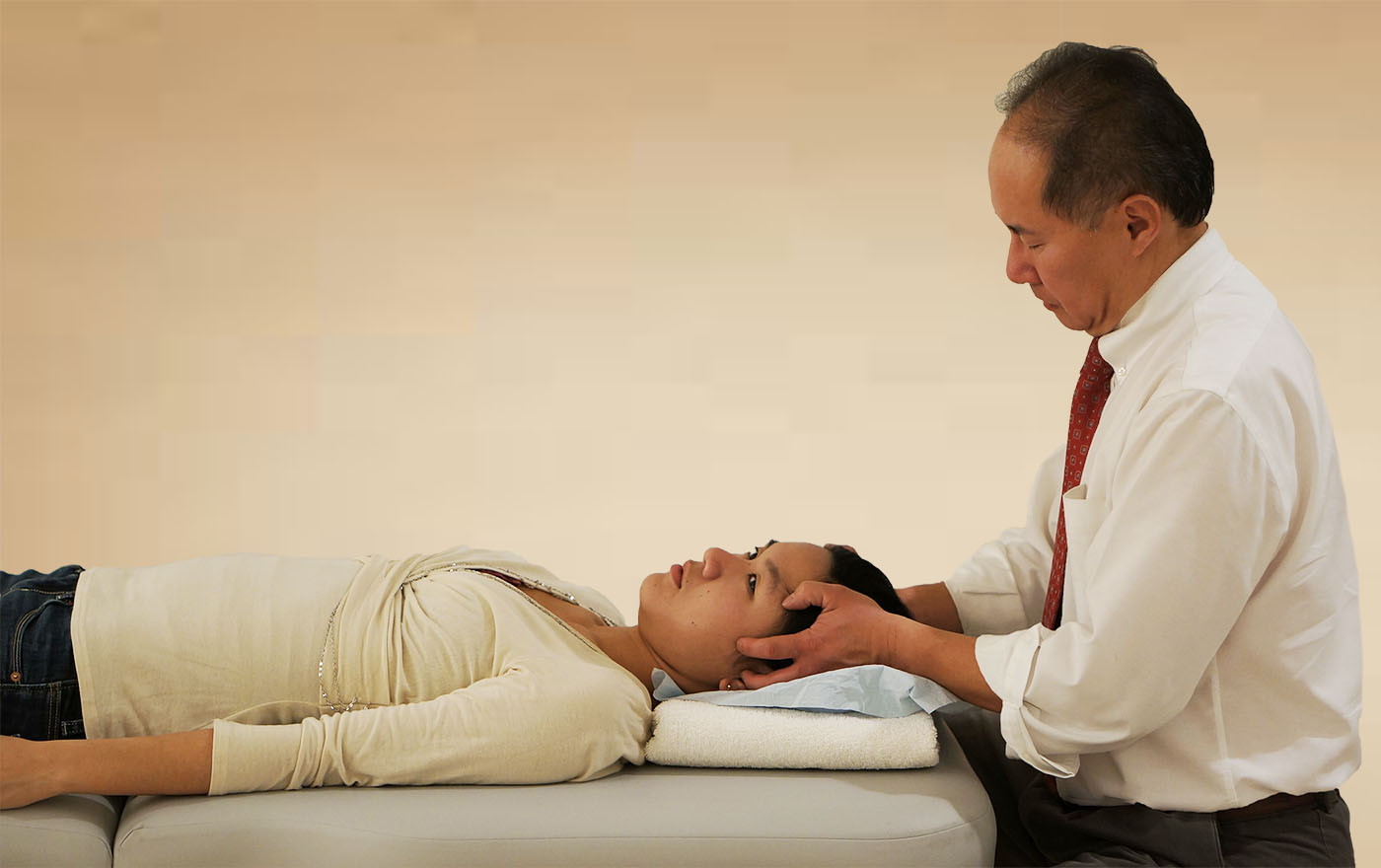
1. What is Osteopathic Medicine?
2. What are the principles of Osteopathic Medicine?
3. What is Osteopathic Manipulative Medicine?
4. What benefits can be found from Osteopathic Manipulative Medicine?
5. Who can receive treatment from Dr. Wong?
6. What should I bring to my first appointment?
7. What should I expect at my first appointment?
8. What should I expect with my first examination?
9. What should I expect for subsequent treatments?
10. How should I feel after my treatment?
11. What to do after your treatment.
1. What is Osteopathic Medicine?
Osteopathic medicine is a branch of the medical profession in the United States. It is a philosophy of health care and a distinctive art, supported by expanding scientific knowledge; its philosophy embraces the concept of unity of the living organism's structure (anatomy) and function (physiology). Its art is the application of the philosophy in the practice of medicine and surgery in all its branches and specialties. Its science includes the behavioral, chemical, physical, spiritual and biological knowledge related to the establishment and maintenance of health as well as the prevention and alleviation of disease.

2. What are the principles of Osteopathic Medicine?
Osteopathic concepts emphasize the following principles:
3. What is Osteopathic Manipulate Medicine?
Osteopathic manipulative treatment (OMT) is a whole system of evaluation and treatment designed to achieve and maintain health by restoring normal function to the body. It involves osteopathic physicians using their hands to diagnose, treat, and prevent illness or injury. Patients of all ages from newborns to the elderly have benefited from OMT. It has been found to be beneficial in birth trauma, colic/irritability, recurrent ear infections, chronic sinusitis, learning/behavior disorders, headaches (muscle tension/migraines), TMJ dysfunction, neck & back pain, arm & leg pain, carpal tunnel syndrome, sciatica, anxiety/tension, respiratory & digestive problems, sports/work/motor vehicle accidents, and preventive care.
4. What benefits can be found from Osteopathic Manipulative Medicine?
Osteopathic manipulative treatment has been found to be beneficial in birth trauma, colic/irritability, recurrent ear infections, chronic sinusitis, learning/behavior disorders, headaches (muscle tension/migraines), temporomandibular joint (TMJ) dysfunction, neck & back pain, arm & leg pain, carpal tunnel syndrome, sciatica, anxiety/tension, respiratory & digestive problems, sports/work/motor vehicle accidents, and preventive care.
5. Who can receive treatment from Dr. Wong?
Dr. Wong provides Osteopathic manipulative treatments to patients of all ages from newborns to the elderly.
6. What should I bring to my first appointment?
Please bring the completed Patient Information and Patient Medical History forms to your first office visit.
7. What should I expect at my first appointment?
Initial visits can last up to 60-75 minutes and follow-up visits up to 30-45 minutes. Dr. Wong will begin the session discussing concerns you may have and any issues you are currently experiencing. After a thorough history is obtained, you will receive an osteopathic structural and functional examination to determine problem areas and which option of treatment will work for you.
8. What should I expect with my first examination?
Osteopathic manipulative treatment (OMT) is a hands-on treatment where osteopathic physicians (D.O.s) use their hands to examine your head, neck, back, and other parts of your body (joints, tendons, ligaments and muscles) for pain and restriction during motion that could signal an injury or impaired function. The patient is usually treated while standing, sitting, and lying on their back. At times, the patient may be asked to change positions or to participate in some way in the treatment process. Accommodations are always made to keep the patient as comfortable as possible. OMT restores balance to the whole body.
9. What should I expect for subsequent treatments?

On occasion, different techniques or modalities may be used based on what the osteopathic physician feels is most appropriate for you at that time. OMT includes many different techniques to move your soft tissues, muscles, and joints. These may include light pressure applied with or without resistance, passive motion (you are not assisting), active motion (may be tightening muscles or breathing deeply), gentle joint mobilization, or a combination of all of the above. All of these modalities are performed with very little force. Whichever techniques are used, the principles upon which the treatment is based do not change. Our goal is to look for the health within our patients and we work to support the innate capacity for healing within.
10. How should I feel after my treatment?
Typically, patients feel very relaxed and peaceful after a treatment. Occasionally, patients may experience one or two days of feeling tired or mildly sore. This is normal and can indicate the treatment process is continuing and the injury pattern or dysfunction is starting to heal. The time it takes for one to heal is dependent on many factors but, in general, the more chronic the issue, the longer the healing process.
11. What to do after your treatment.
Because osteopathic manipulative treatment alters the dynamics of tensions held by the tissues and fluids, we recommend patients "take it easy" for the first two to three days after each treatment. In other words, get adequate rest, limit or eliminate high impact or intense workouts, avoid excessive alcohol or caffeine intake, and keep well hydrated with water.

